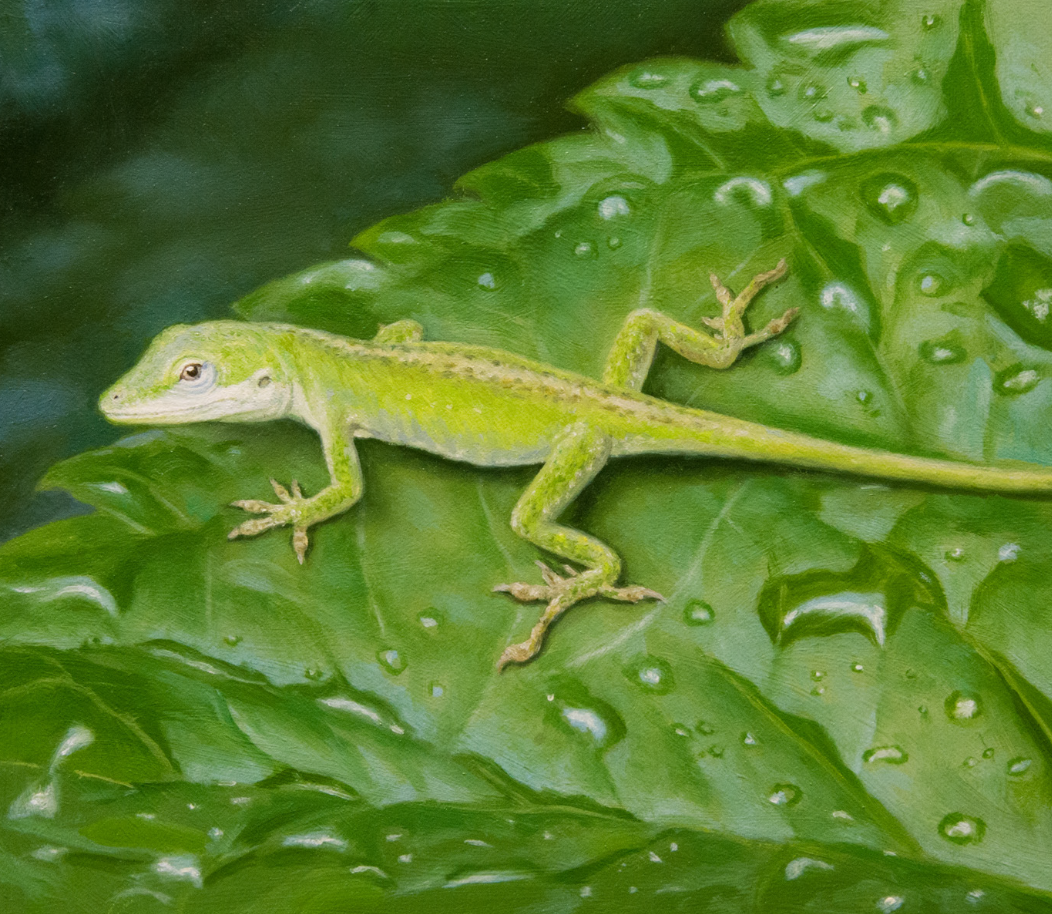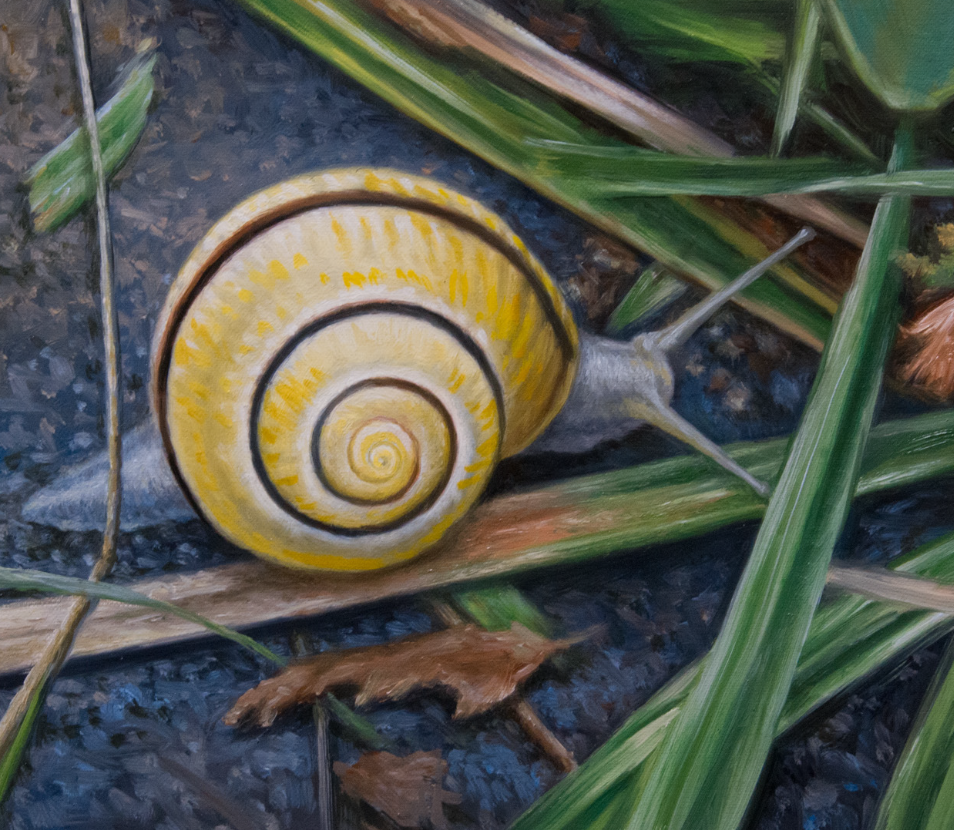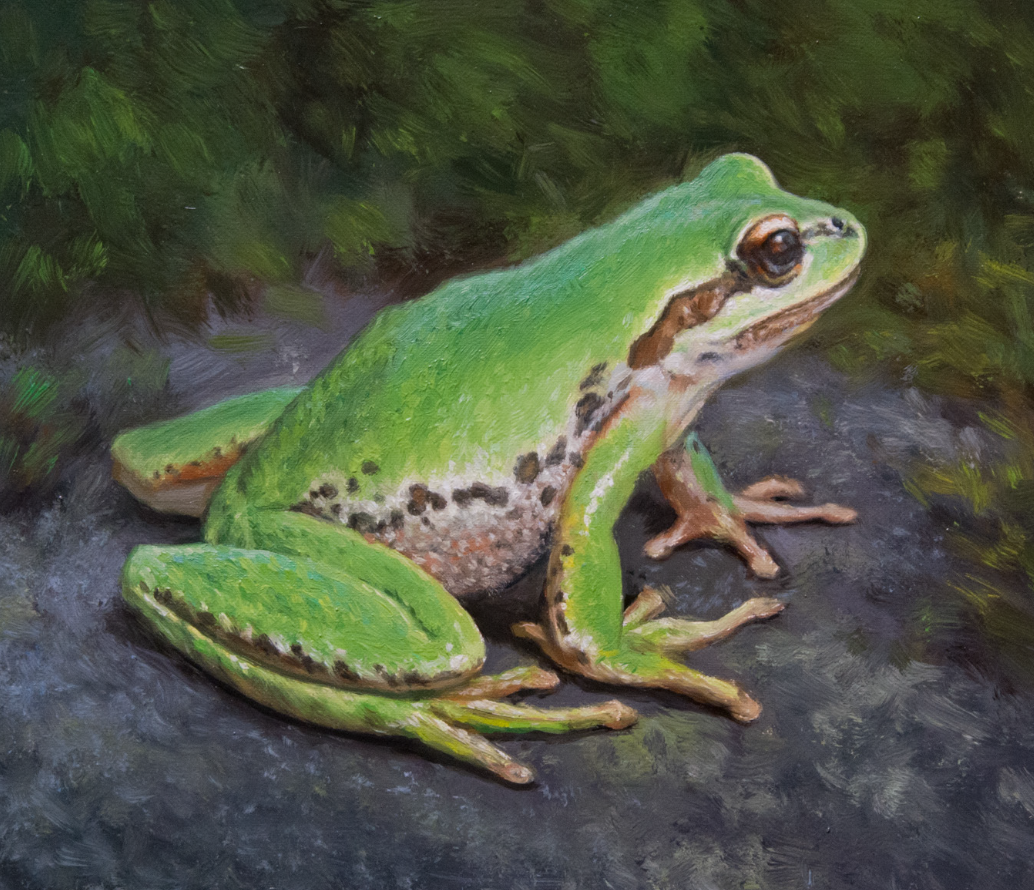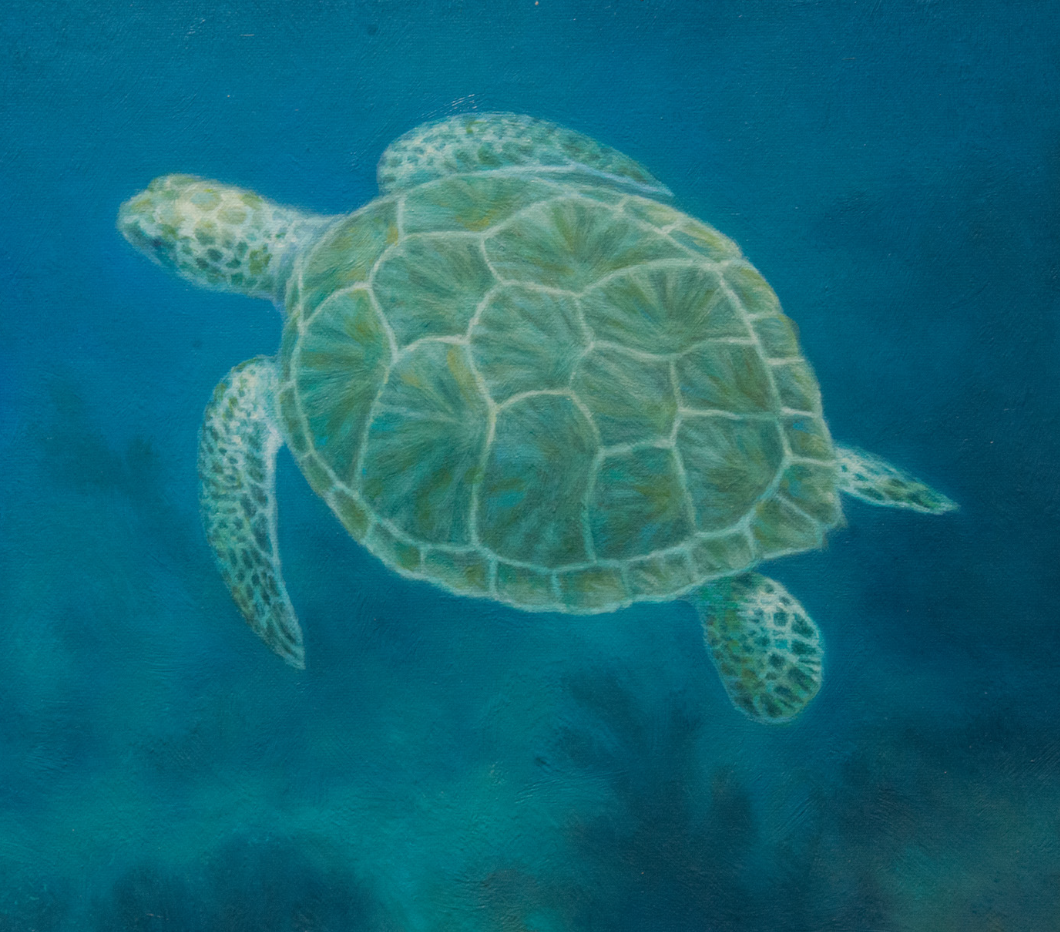Guardian Angel
The Earth needs a guardian angel. Now. We do, too. The Broken Wings and Guardian Angel triptychs and related nature morte paintings were made in response to the ongoing loss of natural habitats around the world and the consequent mass-extinction of plant and animal species. According to a 2018 World Wildlife Fund report authored by scientists from across the globe, humanity has wiped out 60% of Earth’s mammals, birds, fish and reptiles since 1970. One Million species now face extinction.
Broken Wings, 1995, oil on wood. Triptych. Left: Classical Ruins in a Field of Weeds, 12 x 8. Center: City Under Clouds. 12 x 16. Angel with Broken Wings. 12 x 8. Four accompanying natur morte studies of dead birds; wood panels, 10 x 12.
Guardian Angel: “Hurt Not the Earth, Neither the Sea, Nor the Trees.” 1991-2001. Triptych. 48 x 120. Left: The Sea, 48 x 24. Center: Guardian Angel, 48 x 48. Right: The Trees, 48 x 24. Secondary paintings: Lizard; Snail; Frog; Sea Turtle; wood panels, 5 x 7.




The Trees
The Sea
Lotus, 2004, o/c, 12 x 12
Full text of Exhibition:
Guardian Angel
The Earth needs a guardian angel. Now. We do, too. 2017 Tubbs fire, California. 2019 Kincade. 2023 Maui; Canada; Riverside County. Kelp forests gone along the Sonoma Coast. The river overmined and overrun by invasive species. “Forever chemicals” in our bloodstream and the milk of nursing mothers. Migrating monarchs few and far between. Fewer insects. Diminishing habitat for bees and songbirds. These two triptychs, Broken Wings, and Guardian Angel and the smaller paintings of living creatures of the forests and seas were made in response to the ongoing loss of natural habitats around the world and the consequent mass-extinction of plant and animal species. According to a 2018 World Wildlife Fund report authored by scientists from across the globe, humanity has wiped out 60% of Earth’s mammals, birds, fish and reptiles since 1970. One million species now face extinction. The earth and all its creatures need protection, and defenders who care.
In 1990 Massachusetts Institute of Technology’s MIT Press published Imperiled Planet: Restoring the World’s Ecosystems. I read it with sadness and curiosity. It is a scientific survey illustrated with charts and photos from around the world organized under chapter titles such as Forests; Rivers; Seas and Oceans; Coral Reefs; Mountains; Deserts. Reading it had a profound impact on how I thought about the earth, its fragile ecosystems, and the need to protect them. Thankfully, the word restoring is in its subtitle and its contents offer not only scientific data, but wisdom, a love for the earth and hope.
As a frequent airline traveler flying to far off places around the globe for my work on film projects during the 1990s, back and forth over central California and to diverse locations and landscapes in Iceland, Thailand, Zimbabwe, Central America, Japan, the Middle East, North Africa, Europe and New Zealand, I witnessed with my own eyes the wonder and fragility of our planet as it scrolled past my window 20,000 feet below.
Broken Wings, 1992, began as a simple aerial landscape of the developer-scarred terrain on the outskirts of Los Angeles and evolved into a triptych with contemplative side panels. Guardian Angel, 2003, was fully laid in on a canvas at my easel when I awoke one morning at dawn and in the half light and gathering consciousness an angel appeared in my mind’s eye super-imposed over the pristine landscape. Later on, I recalled a bible verse from the Book of Revelation on the back of a Christmas card I’d once received: “Hurt not the earth, neither the sea, nor the trees.”
I was seeking a lost sacredness to counter the destruction and desecration I was seeing in the world all around me. I yearned for a time and a style in Western painting when every detail was precious because everything was part of a divine creation, even blades of grass and insects. In September 2002 I was surprised to read Roberta Smith’s comment in her New York Times review of my New York in the Light of Memory: A Spherical Panorama from the South Tower, “Jan Van Eyck must be Mr. Evans’ favorite artist.” That 360-degree view was indeed a meticulous aerial urban landscape like the background in the Roulin Madonna at the Metropolitan. But back in the studio I was also exploring the physicality of Van Eyck’s guardian angels, imaginative figures suspended in the air on brightly colored wings, in shimmering satin robes, brandishing divinely luminous swords with which to defend the sacred.
The idea of an art form, and an angel, that is beautifully sensual and physical, and simultaneously spiritual and sacred, appealed to me as a way of picturing Creation and humanity’s relationship to nature. The sword is a warning to respect and preserve; the lotus an offering, a gift to those who understand and protect what they love. In Wallace Stevens’ poem, Angel Surrounded by Paysans, an angel speaks to us:
“… I am the angel of reality,
Seen for a moment standing in the door.
I have neither ashen wing nor wear of ore
And live without a tepid aureole,
Or stars that follow me, not to attend,
But, of my being and its knowing, part.
I am one of you and being one of you
is being and knowing what I am and know.
Yet I am the necessary angel of the earth,
Since, in my sight, you see the earth again,”









